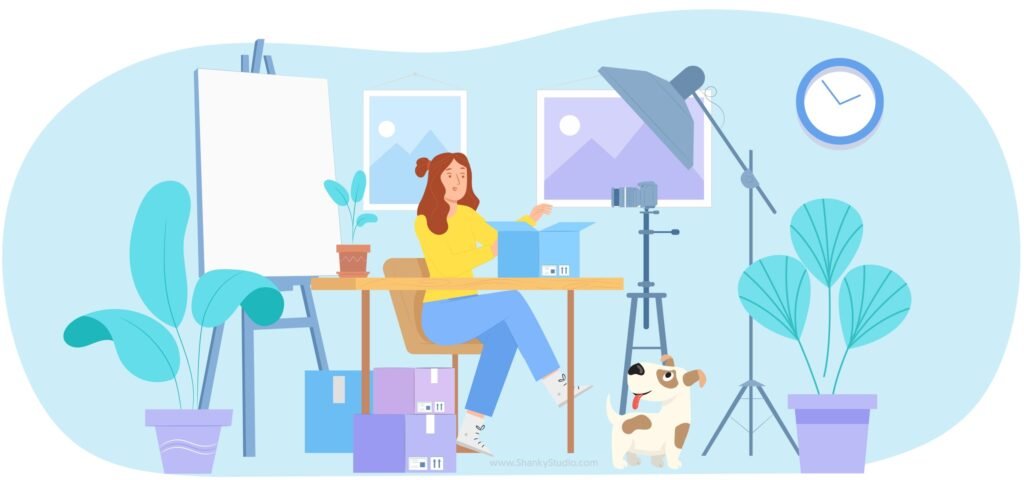Nowadays AI Art (Artificial Intelligence Art) is aggressively stepping into the visual art industry. Furthermore, in this explosion of AI art, we see a clear cut divide between non-AI artists and AI artists. Both sides are voicing for and against AI art. Let us try to understand what AI art is, what are its merits and demerits, and how it will affect the visual arts industry in the near future.
Initially, there was difficulty in even considering photography as an art. However, nowadays photography is considered as a valid form of art. Many art museums now exhibit photographic works of art, which are well received by the art lovers. Now photography has become a part of our life and it is used extensively in various fields. Many schools and colleges offer photography as a part of their visual arts curriculum.
Similarly, due to the obvious advantages, AI art is going to be here with us, carving its own niche in the field of visual arts. Eventually, with the passage of time, the visual arts industry would accept and adopt it.
Why is there panic and uproar over AI art in the artist community?
AI art technology scrapes billions of art-related images from the web, without asking permission from artists or compensating artists for their hard work. AI art companies use these images to train their AI art machines, and then monetize the products based on AI art.
This issue is related to ethical and moral practices related to copyright and plagiarism. And finally, AI art technology will also adversely affect the jobs of non-AI artists. In short, the artist’s style and artwork is copied, used to train the AI art machine; and then finally the AI machine will take over their work too.
How to use AI Art Tools?
In simple words, AI Art Tool is text-to-image generation software that creates digital images based on suggested keywords. An AI art tool also allows for many variations and improvisations in the generated image. For example keywords like Shiva Trident, Moon, Night and Indian Mythology have generated the following image –

What tools are available for AI Art?
The roots of AI Art go back to the year 2010 when Alexander Mordvintsev created Google’s DeepDream project. Over the past few years, several new initiatives have brought AI art to the forefront. Below are the free and paid AI art tools available to the public –
What are the benefits of AI art?
- AI art is easier, faster and more efficient.
- AI Art can create artwork with intricate details.
- AI art requires less artistic skill.
- AI art allows ordinary people to express themselves and create beautiful artwork.
- AI art is less expensive than non-AI artwork.
- AI art reduces dependence on non-AI artists.
- AI art will create job opportunities for AI artists.
- AI art allows for quick what-if analysis for proof of art concept.
- AI art can provide reference images to non-AI artists and can become part of non-AI artists’ workflow.
What are the cons of AI Art?
- Image scraping is an issue related to ethical and moral practices related to copyright and plagiarism.
- Unemployment –
- Short-term “Structural Unemployment” due to technology shift for non-AI artists who can acquire AI art skills.
- Lack of employment opportunities for non-AI artist who are unable to adopt AI art skills.
What is AI and how does it work technically?
AI art architecture is divided into 3 steps process –
- Artificial Intelligence (AI): A technology that enables machines to mimic human behaviour.
- Machine Learning (ML): A subset of AI techniques that use statistical methods such as classification, clustering, regression, dimensionality reduction, and deep learning to enable machines to improve with experience. The ML cycle includes the following steps −
- Define Purpose
- Receive data
- Prepare the Data
- Analyse and Explore
- Remove feature
- Development and Training of the Model
- Test Model
- Deploy the Model
- Monitor and Optimize
- Deep Learning (DL): A subset of ML, which makes it possible to compute multi-layer neural networks. This will help the machine train itself to perform the task.
Conclusion
AI art is here and will make its way into the world of visual arts. Skills in AI art and digital design will be valuable assets for both non-AI and AI artists. Below are my suggestions for the visual arts industry –
- AI art companies –
- AI art companies should pay and give credit to non-AI artists for their artwork to be used as input for training AI art machines.
- Provide opt-in/list and opt-out/de-list options for non-AI artists.
- To the Government and law making bodies –
- Government should empower artistes and protect their rights.
- Force AI art companies to adopt fair and ethical practices.
- For non-AI artists –
- Non-AI artists should not hesitate to adopt ethical AI art tools and label them as genuine.
- Educate the public and raise voice against legitimate issues like copyright and plagiarism.
- Don’t use and pay for AI art tools who are using copyrighted images.



Stay tuned for more images from AI Art.